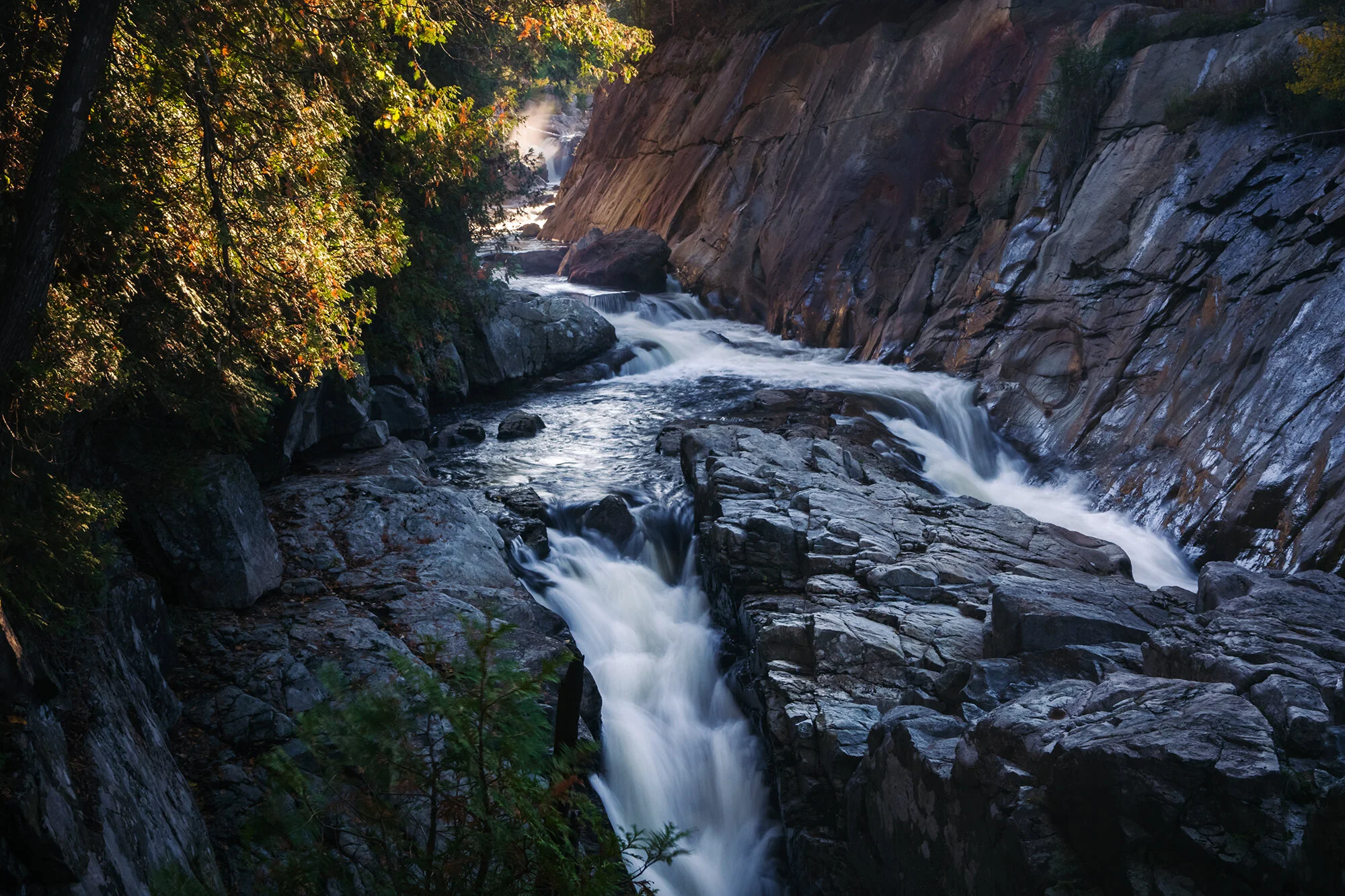The next morning, Jane and I head out early to photograph Stowe’s church at sunrise. The clouds are socked in, so the morning light is quite subdued; the church is still quite beautiful, though, against its backdrop of bronzed autumn trees and mist on the neighboring mountains. We also park in the lot behind the church and walk down Sunset Street to the trailhead for Sunset Rock - a small westward overlook across the town’s main street after short climb through the forest. The light is quite flat and miserable, so we take a few photos and selfies before descending the hillside to grab breakfast. Stowe, for all its pomp and popularity, is no larger than most of the small villages we’ve driven through in the past day; a single main street, a single traffic light intersection, and a few coffee shops, restaurants, and stores. It’s hard to imagine how crowded the area gets throughout the day in autumn, but we start to get a sense: by eight in the morning, several of the local breakfast joints have lines stretching out the doors and onto the sidewalk. Jane and I grab croissants and drinks at the nearby coffee shop and eat these on a nearby picnic bench before deciding to ignore Stowe and Smuggler’s Notch, opting instead to get out of town as soon as possible. We turn off the highway onto some backroads in Stowe Hollow, where we find beautiful, fog-laced hillsides covered with autumn foliage. But it is an easy consensus: Vermont has many scenic places, idyllic villages, and beautiful autumn landscapes. Stowe itself is far, far overrated, especially when it is a parking lot. Don’t center your photography travels around Stowe.
Heading south out of the Lamoille Valley, we turn onto VT-100, a famed driving route that cuts down the east flank of the Green Mountains. We stop to photograph Warren Falls and Moss Glen Falls, both looking beautiful against a cloak of golden foliage. Jane tries to ford the creek below Warren Falls against my advice; I have a good laugh a few moments later when she lands butt-first in the water just a few feet away from the creek bank. Further south, we have lunch at the Rochester Café and Country Store and browse the combined bookstore/café across the street, which has a wonderful collection of local memoirs and naturalist writing. Back on the road, we continue south, taking backroads to bypass Woodstock (another madhouse of foliage traffic). We spend a quiet afternoon and evening in a barn-converted-guesthouse on a farm in Reading, reading and watching movies into the night. The next morning (perhaps disillusioned by recent experience), we again choose again to ignore some of the area’s famously photographed farm scenes. We head homeward early, taking country roads overland into northern central Massachusetts and heading along Rt. 9 into Boston to avoid the pandemonium of this year’s unusually timed Boston Marathon.




























































